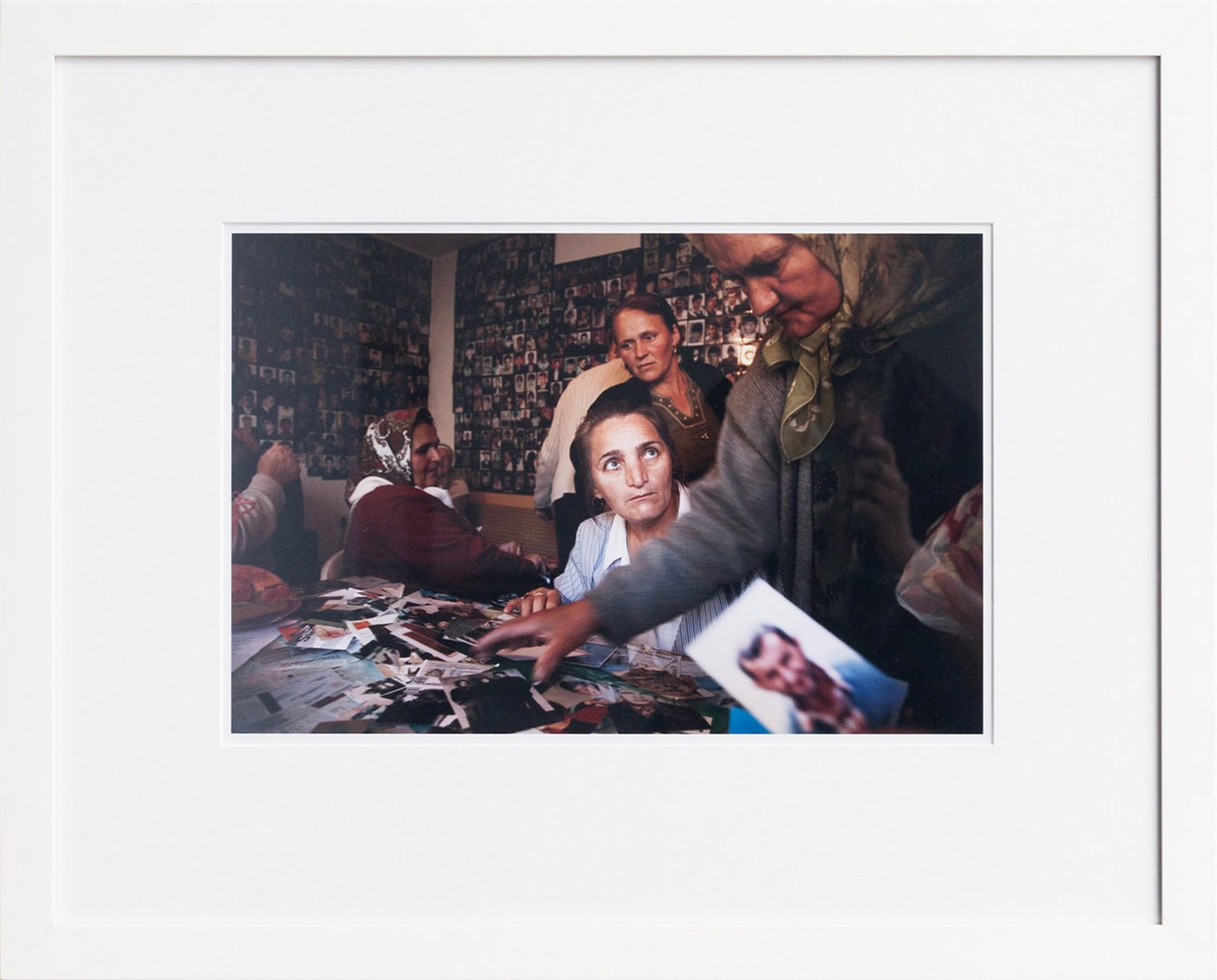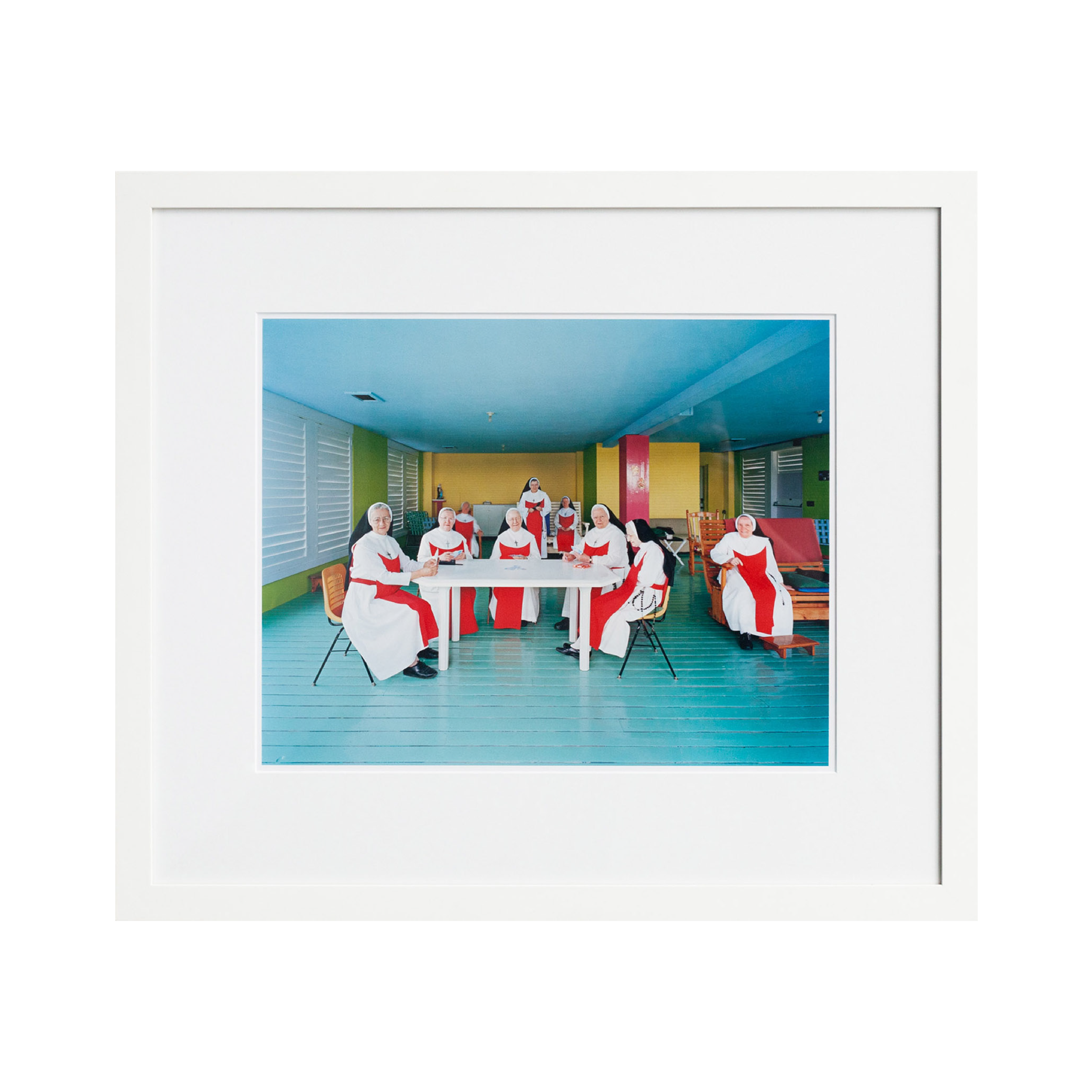Srebrenica, Bosnia | Roger LeMoyne
2006
10 x 15.75 inches (20.75 x 25.75 inches framed)
Edition of 30
ABOUT THE ARTWORK
More than eight thousand Bosnian Muslims, most of them men and boys, were killed during the Srebrenica Massacre in July 1995. Roger LeMoyne attempts to document the aftermath of the genocide and explores the question, “‘How do you photograph an absence?” The Mothers of Srebrenica are a group of women, many of whom lost family members in the genocide, who collect photographs of the victims. The group has been one of the most tenacious in pursuing justice and remembrance for these men, a mission in which photography plays a vital role.
ABOUT THE ARTIST
Born in Montreal
Lives and works in Montreal
Roger LeMoyne studied film and music at Concordia University, toured Canada with a band, and worked in film and music before turning to photography. Since the 1990s, he has been documenting the human condition, conflict, human rights issues, and international aid in the Middle East, Africa, and Eastern Europe. His images have garnered more than fifty awards internationally, including a National Magazine Award, the Michener-Deacon Fellowship, a Canada Council for the Arts grant, a Quebec Arts Council grant, and the Dorothea Lange–Paul Taylor Prize from Duke University. His first book, Details Obscurs, was published in 2005 and his work has been nominated for fifteen National Magazine Awards.
2006
10 x 15.75 inches (20.75 x 25.75 inches framed)
Edition of 30
ABOUT THE ARTWORK
More than eight thousand Bosnian Muslims, most of them men and boys, were killed during the Srebrenica Massacre in July 1995. Roger LeMoyne attempts to document the aftermath of the genocide and explores the question, “‘How do you photograph an absence?” The Mothers of Srebrenica are a group of women, many of whom lost family members in the genocide, who collect photographs of the victims. The group has been one of the most tenacious in pursuing justice and remembrance for these men, a mission in which photography plays a vital role.
ABOUT THE ARTIST
Born in Montreal
Lives and works in Montreal
Roger LeMoyne studied film and music at Concordia University, toured Canada with a band, and worked in film and music before turning to photography. Since the 1990s, he has been documenting the human condition, conflict, human rights issues, and international aid in the Middle East, Africa, and Eastern Europe. His images have garnered more than fifty awards internationally, including a National Magazine Award, the Michener-Deacon Fellowship, a Canada Council for the Arts grant, a Quebec Arts Council grant, and the Dorothea Lange–Paul Taylor Prize from Duke University. His first book, Details Obscurs, was published in 2005 and his work has been nominated for fifteen National Magazine Awards.

2006
10 x 15.75 inches (20.75 x 25.75 inches framed)
Edition of 30
ABOUT THE ARTWORK
More than eight thousand Bosnian Muslims, most of them men and boys, were killed during the Srebrenica Massacre in July 1995. Roger LeMoyne attempts to document the aftermath of the genocide and explores the question, “‘How do you photograph an absence?” The Mothers of Srebrenica are a group of women, many of whom lost family members in the genocide, who collect photographs of the victims. The group has been one of the most tenacious in pursuing justice and remembrance for these men, a mission in which photography plays a vital role.
ABOUT THE ARTIST
Born in Montreal
Lives and works in Montreal
Roger LeMoyne studied film and music at Concordia University, toured Canada with a band, and worked in film and music before turning to photography. Since the 1990s, he has been documenting the human condition, conflict, human rights issues, and international aid in the Middle East, Africa, and Eastern Europe. His images have garnered more than fifty awards internationally, including a National Magazine Award, the Michener-Deacon Fellowship, a Canada Council for the Arts grant, a Quebec Arts Council grant, and the Dorothea Lange–Paul Taylor Prize from Duke University. His first book, Details Obscurs, was published in 2005 and his work has been nominated for fifteen National Magazine Awards.




